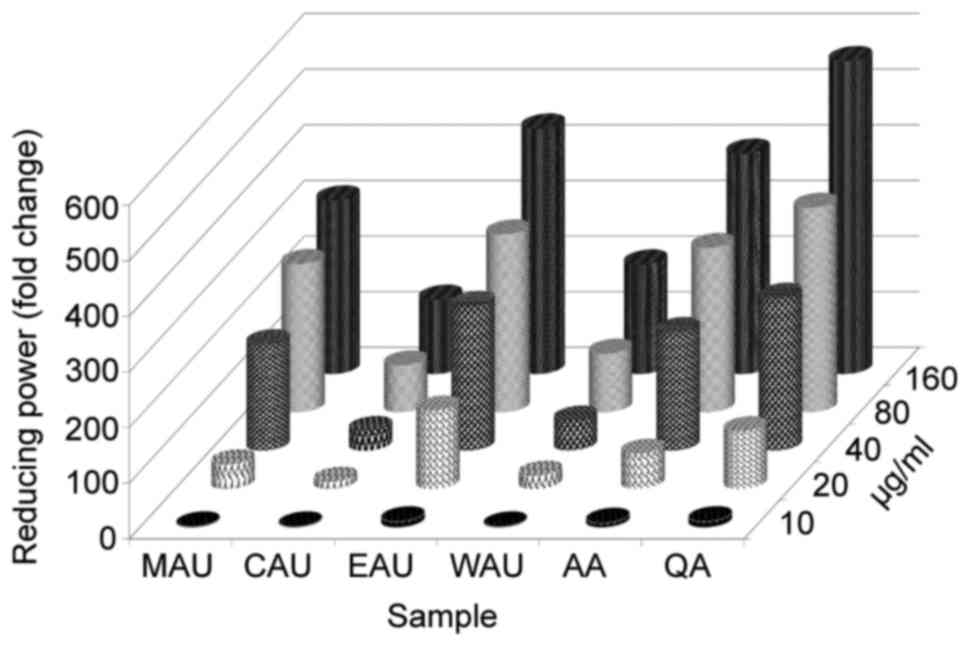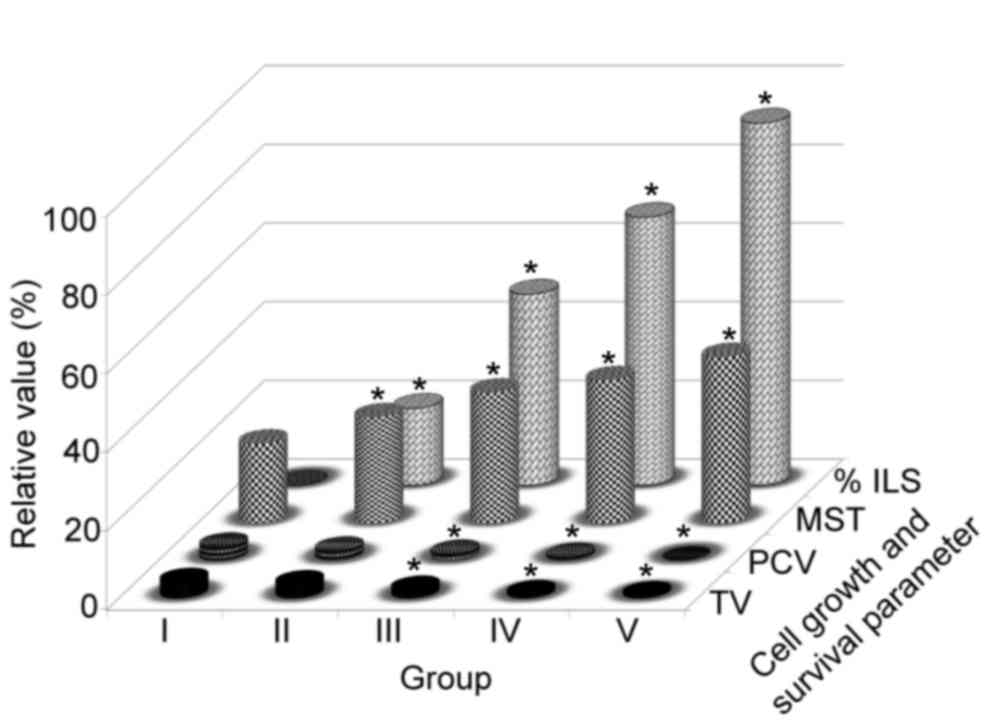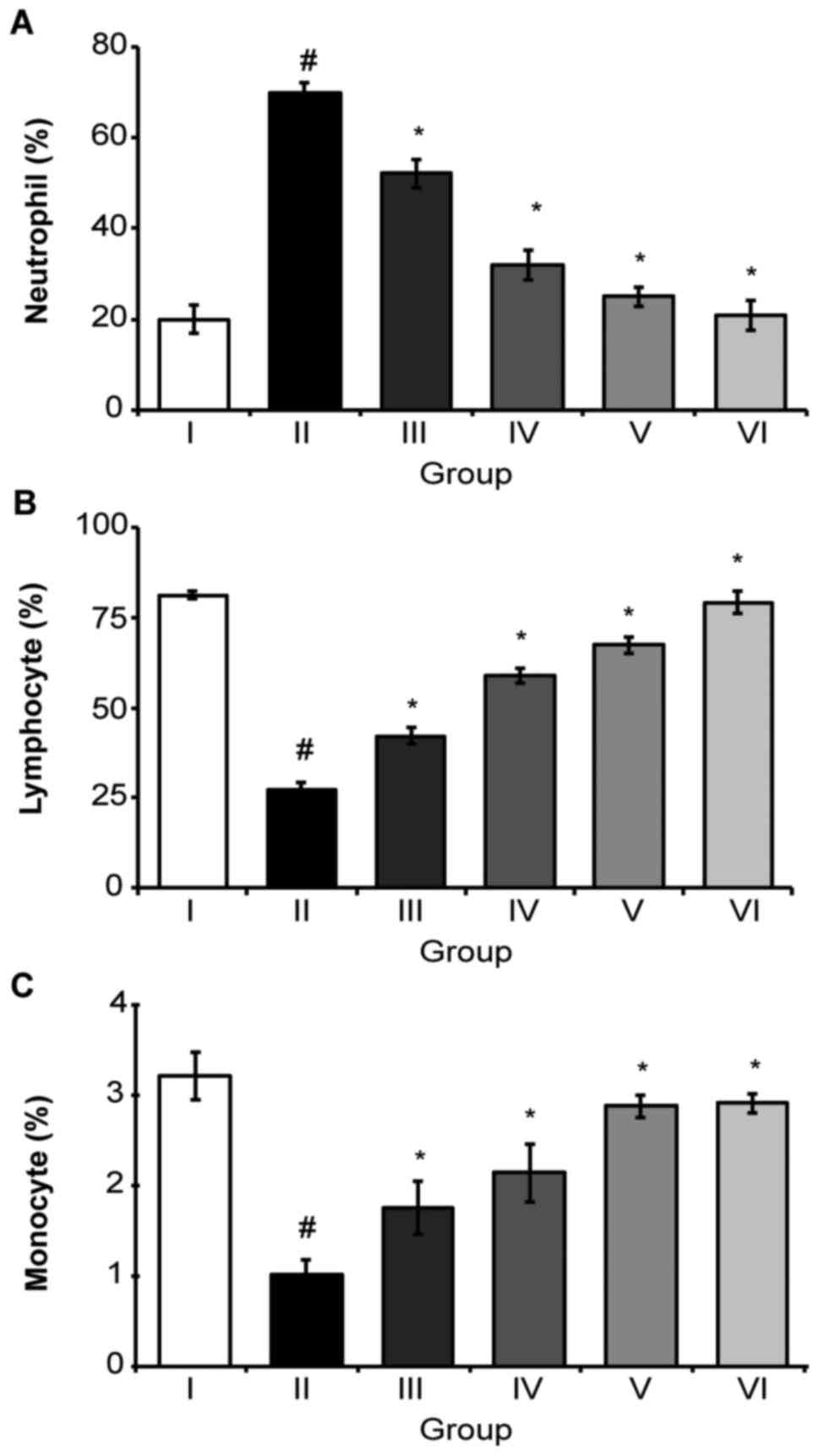|
1
|
Ďuračková Z: Some current insights into
oxidative stress. Physiol Res. 59:459–469. 2010.PubMed/NCBI
|
|
2
|
Halliwell B: Free radicals, antioxidants,
and human disease: Curiosity, cause, or consequence? Lancet.
344:721–724. 1994. View Article : Google Scholar : PubMed/NCBI
|
|
3
|
Poli G, Leonarduzzi G, Biasi F and
Chiarpotto E: Oxidative stress and cell signalling. Curr Med Chem.
11:1163–1182. 2004. View Article : Google Scholar : PubMed/NCBI
|
|
4
|
Ames BN and Shigenaga MK: Oxidants are a
major contributor to aginga. Ann N Y Acad Sci. 663:85–96. 1992.
View Article : Google Scholar : PubMed/NCBI
|
|
5
|
Yeh CC, Hou MF, Tsai SM, Lin SK, Hsiao JK,
Huang JC, Wang LH, Wu SH, Hou LA, Ma H and Tsai LY: Superoxide
anion radical, lipid peroxides and antioxidant status in the blood
of patients with breast cancer. Clin Chim Acta. 361:104–111. 2005.
View Article : Google Scholar : PubMed/NCBI
|
|
6
|
Raskin I, Ribnicky DM, Komarnytsky S, Ilic
N, Poulev A, Borisjuk N, Brinker A, Moreno DA, Ripoll C, Yakoby N,
et al: Plants and human health in the twenty-first century. Trends
Biotechnol. 20:522–531. 2002. View Article : Google Scholar : PubMed/NCBI
|
|
7
|
Branen AL: Toxicology and biochemistry of
butylated hydroxyanisole and butylated hydroxytoluene. J Am Oil
Chem Soc. 52:59–63. 1975. View Article : Google Scholar : PubMed/NCBI
|
|
8
|
Watve A: Aponogeton undulatus. The IUCN
Red List of Threatened Species. 2011.
|
|
9
|
Islam QR: Morphology and nutritional value
of Aponogeton undulatus Roxb. growing in deeply flooded areas in
Bangladesh. Hydrobiologia. 340:3171996. View Article : Google Scholar
|
|
10
|
Biswas SK and Ghosh SE: Bharotio
Bonoushadhi. 6. Calcutta University Press; India: 1977
|
|
11
|
Chowdhury NS, Alam B, Haque ASM Tanbirul,
Zahan R, Mazumder EH and Haque E: In vitro free radical scavenging
and thrombolytic activities of Bangladeshi aquatic plant Aponogeton
undulatus Roxb. Glob J Pharmacol. 5:27–32. 2011.
|
|
12
|
Yu L, Haley S, Perret J, Harris M, Wilson
J and Qian M: Free radical scavenging properties of wheat extracts.
J Agric Food Chem. 50:1619–1624. 2002. View Article : Google Scholar : PubMed/NCBI
|
|
13
|
Chang CC, Yang MH, Wen HM and Chern JC:
Estimation of total flavonoid content in propolis by two
complementary colorimetric methods. J food Drug Anal. 10:178–182.
2002.
|
|
14
|
Kumaran A and Karunakaran RJ: In vitro
anti-oxidant activities of methanol extracts of Phyllanthus species
from India. LWT- Food Sci Technol. 40:344–352. 2007. View Article : Google Scholar
|
|
15
|
Prieto P, Pineda M and Aguilar M:
Spectrophotometric quantitation of anti-oxidant capacity through
the formation of a phosphomolybdenum complex: Specific application
to the determination of vitamin E. Anal Biochem. 269:337–341. 1999.
View Article : Google Scholar : PubMed/NCBI
|
|
16
|
Choi, Hong Ja Yeob, Eun Jhun, Ou Lim
Beong, Ill Min Chung, Suk Hun Kyung and Ki Park Dong: Application
of flow injection-chemiluminescence to the study of radical
scavenging activity in plants. Phytotherapy Research. 14:250–253.
2000. View Article : Google Scholar : PubMed/NCBI
|
|
17
|
Liu F and Ng TB: Antioxidative and free
radical scavenging activities of selected medicinal herbs. Life
Sci. 66:725–735. 2000. View Article : Google Scholar : PubMed/NCBI
|
|
18
|
Oyaizu M: Studies on products of browning
reactions. Antioxidative activities of products of browning
reaction prepared from glucoseamine. Jpn J Nutr Diet. 44:3071986.
View Article : Google Scholar
|
|
19
|
National Research Council, . Guide for the
Care and Use of Laboratory Animals. National Academies Press;
Washington, DC: 1985
|
|
20
|
Zahan R, Alam B, Islam S M, Sarker GC,
Chowdhury NC, Hosain SB, Mosaddik MA, Jesmin M and Haque E:
Activity of Alangium salvifolium flower in ehrlich ascites
carcinoma bearing mice. Int J Cancer Res. 7:254–262. 2011.
View Article : Google Scholar
|
|
21
|
Alam B, Sajid I, Rashid J, Islam M and
Karmaker BK: Evaluation of antitumor effects of the aerial parts of
polygonum viscosum linn. Glob J Pharmacol. 8:47–52. 2014.
|
|
22
|
Gupta M, Mazumder UK, Kumar RS, Sivakumar
T and Vamsi ML: Antitumor activity and anti-oxidant status of
Caesalpinia bonducella against Ehrlich ascites carcinoma in Swiss
albino mice. J Pharmacol Sci. 94:177–184. 2004. View Article : Google Scholar : PubMed/NCBI
|
|
23
|
Sur P, Bag SP, Sur B and Khanam JA:
Choroaceto hydroxamic acid as antitumor agent against Ehrlich
ascites carcinoma in mice. Neoplasma. 44:197–201. 1997.PubMed/NCBI
|
|
24
|
Packer L, Rimbach G and Virgili F:
Antioxidant activity and biologic properties of a procyanidin-rich
extract from pine (Pinus maritima) bark, pycnogenol. Free Radic
Biol Med. 27:704–724. 1999. View Article : Google Scholar : PubMed/NCBI
|
|
25
|
Middleton E Jr, Kandaswami C and
Theoharides TC: The effects of plant flavonoids on mammalian cells:
Implications for inflammation, heart disease, and cancer. Pharmacol
Rev. 52:673–751. 2000.PubMed/NCBI
|
|
26
|
Shahidi F and Wanasundara PK: Phenolic
anti-oxidants. Crit Rev Food Sci Nutr. 32:67–103. 1992. View Article : Google Scholar : PubMed/NCBI
|
|
27
|
Huang X, Dai J, Fournier J, Ali AM, Zhang
Q and Frenkel K: Ferrous ion autoxidation and its chelation in
iron-loaded human liver HepG2 cells. Free Radic Biol Med. 32:64–72.
2002. View Article : Google Scholar : PubMed/NCBI
|
|
28
|
Segura JA, Barbero LG and Márquez J:
Ehrlich ascites tumor unbalances splenic cell populations and
reduced responsiveness of T cells to Stapylococcus aureus
enterotoxin B stimulation. Immunol Lett. 74:111–115. 2000.
View Article : Google Scholar : PubMed/NCBI
|
|
29
|
Kennedy D Opare, Kojima A, Hasuma T, Yano
Y, Otani S and Matsui-Yuasa I: Growth inhibitory effect of green
tea extract and (−)-epigallocatechin in Ehrlich ascites tumor cells
involves a cellular thiol-dependent activation of
mitogenic-activated protein kinases. Chem Biol Interact.
134:113–133. 2001. View Article : Google Scholar : PubMed/NCBI
|
|
30
|
Ruby AJ, Kuttan G, Babu KD, Rajasekharan
KN and Kuttan R: Anti-tumor and antioxidant activity of natural
curcuminoids. Cancer Lett. 94:79–83. 1995. View Article : Google Scholar : PubMed/NCBI
|
|
31
|
Rakshit S, Mandal L, Pal BC, Bagchi J,
Biswas N, Chaudhuri J, Chowdhury AA, Manna A, Chaudhuri U, Konar A,
et al: Involvement of ROS in chlorogenic acid-induced apoptosis of
Ber-Abl+ CML cells. Biochem Pharmacol. 80:1662–1675. 2010.
View Article : Google Scholar : PubMed/NCBI
|














